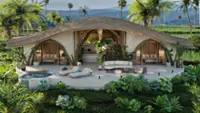The reader (far right), his wife and son enjoying a kaiseki breakfast in the comfort of their ryokan bedroom.
Being food lovers, my family and I went to Tokyo, Japan last year for a food-centric holiday. We arrived at night, and at about 10pm we ventured out of our hotel to search for the quintessential Japanese fare: ramen.
We went to a popular ramen restaurant chain that’s unique for its minimal human interaction. After placing our order through the self-service machine, we were ushered to our own separate cubicles.
Follow us on our official WhatsApp channel for breaking news alerts and key updates!
Japan
,
Readers Share
,
Food
,
Holiday
,
Ramen
,
Tokyo
,
Asakusa
,
Tsukiji Fish Market
,
Tamagoyaki
,
Gyukatsu
,
Sensoji Temple
,
Tokyo Tower
,
Enoshima
,
Kamakura
,
Monjayaki
,
Hakone
,
Akihabara
Thank you for your report!





